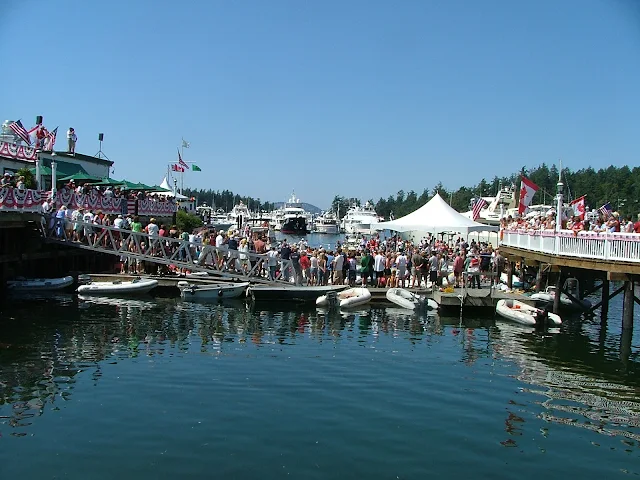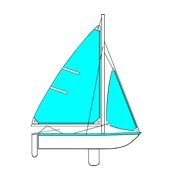Puget Sound is different things to different folks. If you read a few articles or listen to more than one traveler you will likely come away with some overlapping opinions. Lots of people think the San Juans and Puget Sound are the same. They are not. On your noaa chart, there is a place labeled
Puget Sound, it's offshore from Seattle all the way up to Whidbey Island. Virtually every body of water is named something. Names sometimes include a descriptive hint, such as bay, passage, inlet, cove, strait, and of course
sound. Did I miss any besides canal, and channel? Oh yeah, bank, shoal, flats...
Some of us consider,
Puget Sound (as an area) to encompass everything salty, from the Strait of Juan De Fuca south. So this means both sides of Whidbey Island are included, but not the northwest side that faces the San Juans and Vancouver Island, or Anacortes, or Bellingham. I like to think of Bellingham as on Bellingham Bay and Anacortes as up Guemes channel a bit from Rosario Strait. So where does that put Olympia?
We started in Olympia, at Swantown Marina, and so should you. There are numerous ramps scattered around the area, but nothing compares to the Port of Olympia facilities, they have the welcome mat out more than any (boating) city we have ever visited, bar none. I haven't forgotten the praise I lavish on Squalicum Harbor in Bellingham, but the entire waterfront at Olympia is boater friendly, which bumps them to the head of my list.
At Swantown, is a two lane all tide ramp, open 24/7 with a long term parking lot for only $3/day. Transient moorage is abundant, both at the ramp and a short walk away, at the old town waterfront. Don't make a mistake and think of Olympia as simply a place to splash the boat and take off from. Plan your trip to include one or more nights or days at the dock, and bring your bikes, you will be glad you did.
Rather than gush over Olympia, let's get going north. On this trip our turnaround point is Lake Washington. This means we will wander a circuitous course to Seattle, visiting as many Marine State Parks as we can. At Seattle we will go through the Ballard Locks, through Lake Union (Lake Union is the downtown area you see from the freeway) and into Lake Washington to spend the night anchored at Seward City Park. All total we will visit eleven parks, bike and hike most of them, spend seven nights at docks, one at anchor, and motor about 175 miles. Wow-- when I write the specifics it sounds rushed, but we relaxed the entire time.
Day One: We are in the water and on our way at 5pm, this may seem late to get going, but we only have 8 miles, maybe 16, to our first nights stop. We ran the 8 miles to Hope Island State Park, but all the buoys were taken so we continued to the dock at Jerrel Cove State Park, another easy 8 miles, and with plenty of daylight, why not? You sail-boaters should know that we encounterrd a low 31 foot fixed bridge providing vehicle access to Harstine Island. You can avoid the bridge by taking the long way around Harstine. Jerrel Cove has two docks, and across the way is a private marina with a store and transient space. The park is well kept with onsite rangers, car campers, a mile or two of trails that are rideable, and of course you can head out onto the island roads and ride to your hearts content. Perhaps I should remind you that, unlike most of the San Juan destinations, all of the places we spent the night are
car accessible. This means you can plan a Puget Sound rendezvous with friends or family to re-supply or switch out crew members.
 |
| Jerrel Cove at low tide, the ramp is as steep as we have ever seen. |
Day two: click here






















